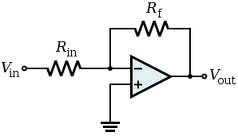Hello,
I was reading "The Audiophiles's project sourcebook" from Mr. G. Randy Slone, and came across a dicrete preamp that has 2 inverting gains stages and in between a tone control network (figure 3.6).
The thing is that there is feedback applied between the output of the 2nd gain stage (thru a voltage divider) and the input volume potentiometer (right where you normally put it to ground). Also, this feedback line passes thru the tone control network.
I was wondering if I can just make without the tone control network and still use both gain stages with this kind of feedback without changing any other parts.
The tone control network is coupled thru capacitors to both gain stages.
Thank you in advance for your kind comments regarding this issue.
Best Regards,
Marko.
PS: I don't know if I'm allowed to scan and upload the schematic from this book and because of that I did not do it.
I was reading "The Audiophiles's project sourcebook" from Mr. G. Randy Slone, and came across a dicrete preamp that has 2 inverting gains stages and in between a tone control network (figure 3.6).
The thing is that there is feedback applied between the output of the 2nd gain stage (thru a voltage divider) and the input volume potentiometer (right where you normally put it to ground). Also, this feedback line passes thru the tone control network.
I was wondering if I can just make without the tone control network and still use both gain stages with this kind of feedback without changing any other parts.
The tone control network is coupled thru capacitors to both gain stages.
Thank you in advance for your kind comments regarding this issue.
Best Regards,
Marko.
PS: I don't know if I'm allowed to scan and upload the schematic from this book and because of that I did not do it.
Have you got a schematic capture software package? If you're using Windows you could download free LTSpice if you haven't got one.
Linear Technology - LTspice IV Downloads and Updates
Draw your modified circuit, capture it using 'Print Screen SysRq', paste it into Paint (Ctrl V), cut out the relevant bit, save it as a .jpg and post it.
w
Linear Technology - LTspice IV Downloads and Updates
Draw your modified circuit, capture it using 'Print Screen SysRq', paste it into Paint (Ctrl V), cut out the relevant bit, save it as a .jpg and post it.
w
... Draw your modified circuit, capture it using 'Print Screen SysRq', paste it into Paint (Ctrl V), cut out the relevant bit, save it as a .jpg and post it.
w
HI W,
Ok. Thank for your kind reply.
This could be the modified preamp, without the tone control network and what I had in mind...
Thanks again.
Best Regards,
Marko.
Attachments
Too many coupling caps and not a modern design.
Pass, Curl, PMA, and others have better designs if your going to use your time to build something discrete.
Pass, Curl, PMA, and others have better designs if your going to use your time to build something discrete.
The volume control in the feedback loop varies the amount of feedback around the circuit to change the gain, hence change the volume. It changes the ratio of the input resistor to the feedback resistor; analagous to Rin and Rf in the attached diagram.
Attachments
If you want to build with discrete components consider this one...
Minimalist Discrete Hi-Fi Preamp
ESP Projects Pages - DIY Audio and Electronics
Minimalist Discrete Hi-Fi Preamp
ESP Projects Pages - DIY Audio and Electronics
Hi,
the advantage of the post5 inverting opamp circuit is that it can give both +gain and -gain by changing the ratio of Ri:Rf
The disadvantages are that it is inverting and that Ri is seen as the input impedance by the previous stage.
the advantage of the post5 inverting opamp circuit is that it can give both +gain and -gain by changing the ratio of Ri:Rf
The disadvantages are that it is inverting and that Ri is seen as the input impedance by the previous stage.
Thank you
Hi guys,
Thank you all for your kind posts.
Ok I've got it. I will try other designs. Maybe Elliott's.
Best Regards,
M.
Hi guys,
Thank you all for your kind posts.
Ok I've got it. I will try other designs. Maybe Elliott's.
Best Regards,
M.
- Status
- Not open for further replies.
- Home
- Source & Line
- Analog Line Level
- Discrete line amplifier question

